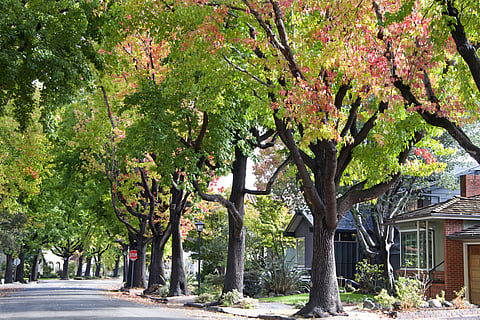WEDNESDAY, March 22, 2023 (HealthDay News) -- Street view-based green space and tree coverage are associated with a decreased risk for postpartum depression (PPD), according to a study published online March 6 in The Lancet Regional Health: Americas.
Yi Sun, from the Chinese Academy of Medical Sciences and Peking Union Medical College in Beijing, and colleagues investigated the relationships between PPD and green space exposure. The analysis included 415,020 individuals identified from Kaiser Permanente Southern California electronic health records (2008 to 2018).
The researchers observed a reduced risk for PPD associated with total green space exposure based on street-view measure (500-m buffer: adjusted odds ratio per interquartile range, 0.98). However, there were no associations seen for Normalized Difference Vegetation Index, land-cover greenness, or proximity to a park. Tree coverage showed stronger protective effects (500-m buffer: adjusted odds ratio, 0.98) compared with other types of green space. Across green space indicators, the proportions of mediation effects attributable to physical activity during pregnancy ranged from 2.7 to 7.2 percent.
"Protection and restoration of trees, rather than low-lying vegetation or grass, may translate into a more pronounced reduction of PPD and optimize the potential benefits of green space exposure for promotion of physical activity and maternal mental health," the authors write.
Abstract/Full Text




